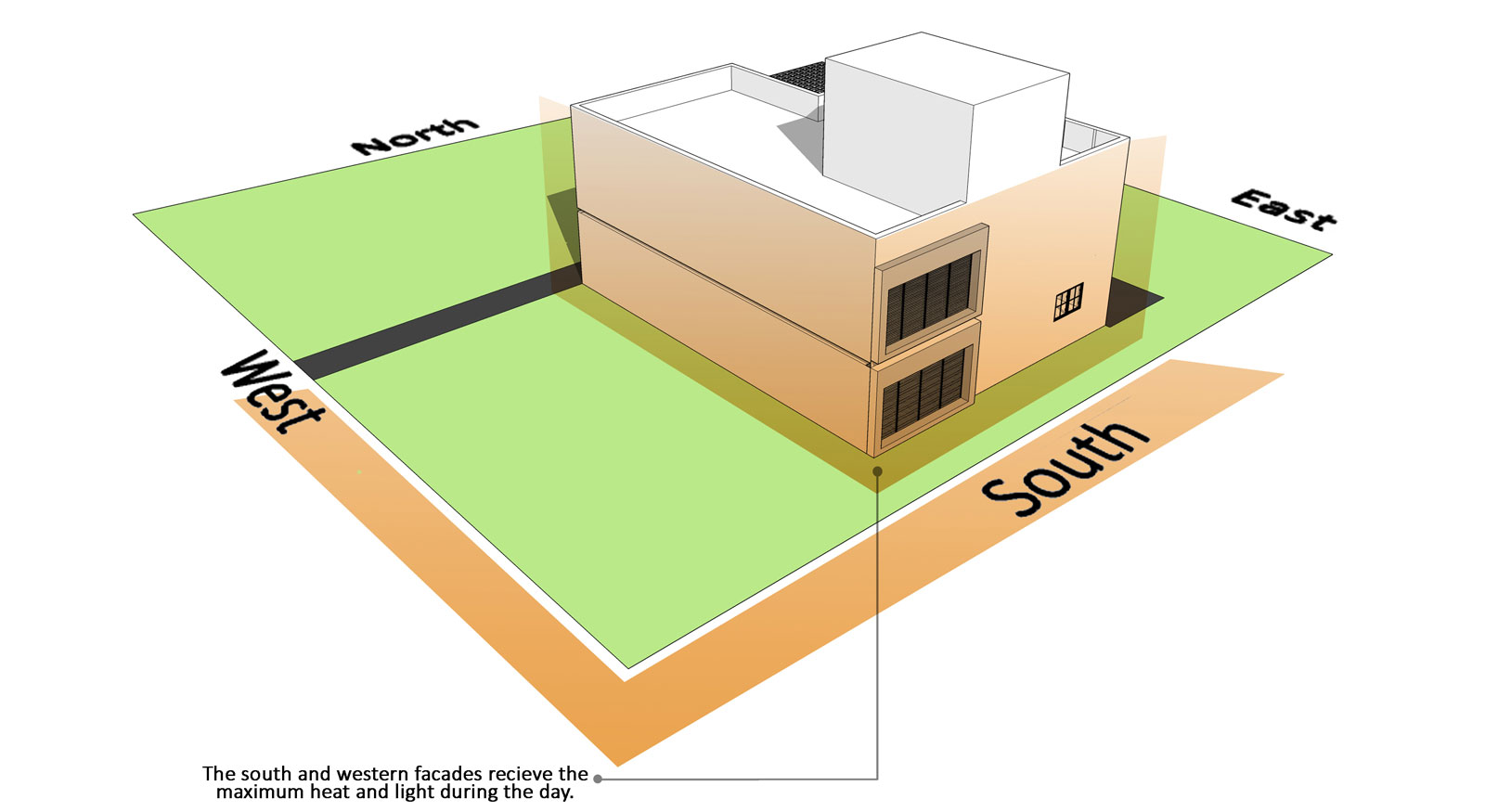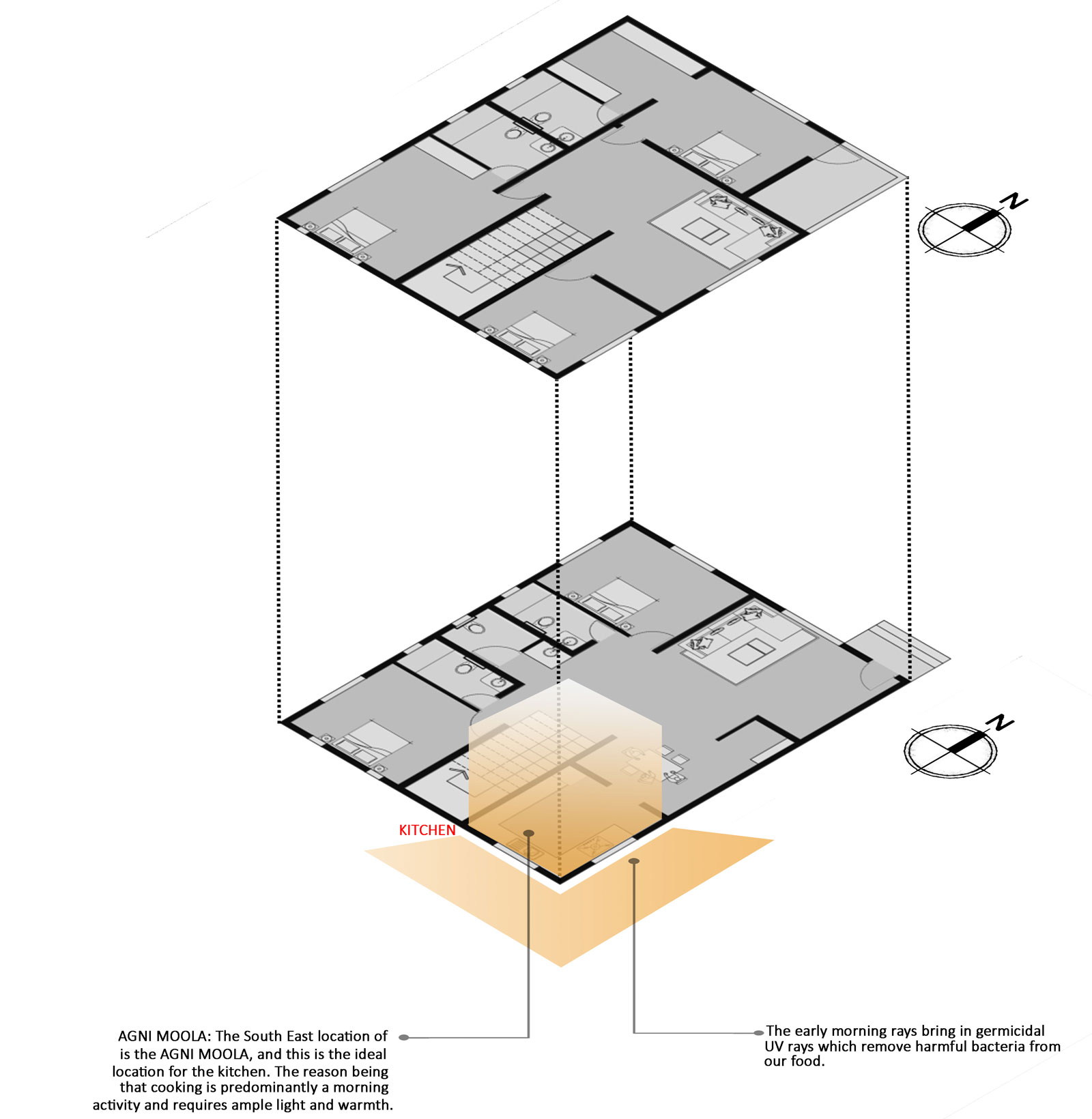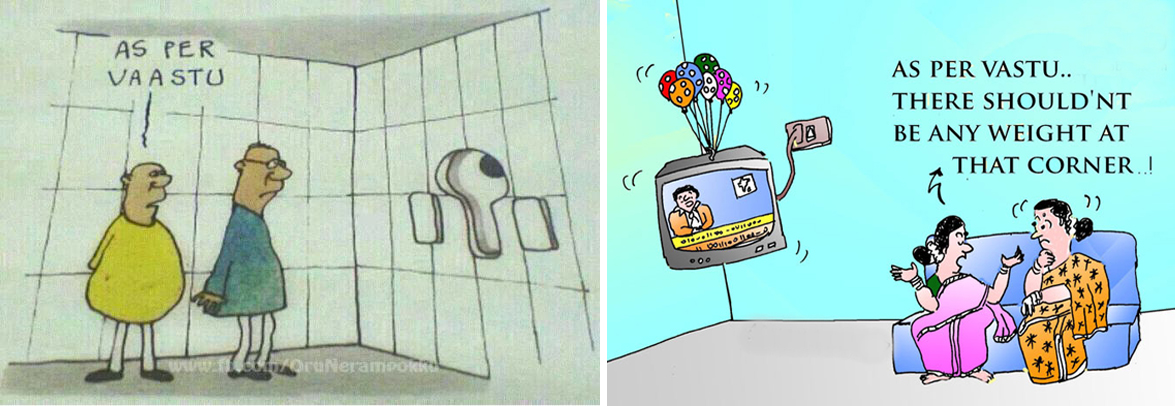An Architects take on Vaastu
As architects we frequently incorporate principles of vaastu in many of our project as rationally as possible since we are sensitive to our client’s requirements & respect their beliefs. We are not vaastu specialists but like to apply the principles logically, to make a positive impact to the usability of the spaces that we design.
We believe as of any traditional ancient systems in India Vaastu also is formed on the basis of science & logic. But we all know, it is not always possible to rigidly follow all the guidelines because of limitations in the sites. So, that is where the understanding of the science behind these principles is beneficial, as it allows us to apply it to buildings scientifically, to create bright, well-ventilated, spacious and well-designed spaces (rooms).
We have tried to explained each of the Vastu guidelines rationally and scientifically, so that you have a choice and can decide what you want to follow or don’t instead of looking at Vastu Shastra as a superstition or a fear psychoses.
Before you read on we would like to establish some basic information –
1 – Sun rises in the East & Set in the West

2 – India is in the northern hemisphere

3 – South & west receives the maximum amount of sun light & heat

4 – You need to believe whatever we say.
(Just kidding – we encourage you to do your own research & come up with your thoughts on the same).

Note – technologies like electricity, electrical appliances, Air conditioning never existed at the time when Vaastu principles were formulated. Technology is a variable factor since it evolves over a period of time.
Understanding the impact of sun on our buildings
As we all know that Sun is the most important celestial body which radiates light and heat and is the reason for existence of life on earth; that’s why Sun is known as the “Soul of Universe” in ancient Indian texts.

1. Kitchen location – South East or North West

It is a place where food items are stored and prepared, hence the kitchen should be warm and with ample light in the day since cooking is predominantly a morning activity. It’s a fact that UV rays are being used to purify water now days & the germicidal UV rays of the Sun will keep the kitchen counter free from germs that spoil the food. Considering the above, the best place is the south-east corner. The sun rises in the east and also during winter mornings, the sunlight falls on the south and east walls of the house.
Hence, the south-east corner of the house where the fire god is invoked for cooking is called the AGNI MOOLA.
2. Masterbed room – South West

In the month of December, it is winter in Northern Hemisphere, you want to stay in that part of house which is the warmest. (Unless of course, you are ok for a big electricity bill for air-conditioning). Post afternoon, the sunlight will directly fall only on the South and West walls. In the evening, when you want to retire to bed, you would certainly like to rest in the warmest place, which is evidently the south-west corner. Another factor to consider is, during Summer, the Sunrise happens fairly early. The north-east part of the house gets really warm early in the morning. This could really disturb your sleep, especially if you had a long and tiring day. Hence, the coolest place under such situation, is the diagonally opposite south-west corner. Hence, the best place to have the Master Bedroom, where the Master of the house can have maximum comfort, is the south-west corner.
3. Safe/ money should always be kept in the south west corner

It is common sense, that wherever, the Master of the house stays, he/she would like to keep their valuables there. The nearer it is, the safer it is. And how better to name this place than to name it after KUBERA (the Hindu god of Wealth). Hence, the south-west corner of the house is called KUBERA MOOLA.
4. Entrance – north / North east

The north-east is called the ISHANYA MOOLA. Ideally, this place should be left empty. There is a reason for this. Since the south-west is the place where you have all the valuables, the entrance of the house, should be as far away as possible, so it should be in the north-east corner.
5. Pooja – North east
In a big site, the Puja room can be in the Centre of the House: The Scientific Reason- The central part of a large house should be kept open to allow proper flow of air and cross ventilation. It makes sense to have a Puja room right in the middle of this court as it can be seen from all rooms and the space is utilized.
In normal sized homes, the Puja room could be in the North-East. The Scientific Reason– Early at dawn, the Sun is in the North-Eastern part of the house. These hours are ideal for Yoga, meditation, prayer or study as it is very quiet and peaceful. Also, the early morning Sun’s rays have a very beneficial effect on our health. Therefore, the North-East corner is the best suitable for the Puja Room/prayer room or meditation room.
6. North east should be the lowest point of the building
Usually it is also recommended that this corner should be 1 or 2 feet below the house level. That is because, if there is a day, when there is unusually large amount of rain, which might lead to floods, if the north-east corner of the house gets flooded with water, the master bedroom & the adjacent kubera moola ( south west ) where all the valuables are kept is far away from water as possible.
7 . Head should not be kept in the north direction while sleeping

It is a fact that earth has a magnetic field. Due to the presence of iron in our blood amongst other elements the Earth’s magnetic field has a subtle influence on us. In India, which is in the northern hemisphere, it is believed that if you place your head to the north and stay that way for 5 to 6 hours, the magnetic pull will cause pressure on your brain. This is true as long as you are in the northern hemisphere – sleeping with your head towards any side except north is okay. Similarly in the southern hemisphere, it is advisable not to put your head to the south.
8 . South west should be highest point of the building

Having southwest as the highest point in the building has a significant impact in reducing the amount of heat in the building. Since south & west sides receive the maximum amount of heat, if they are taller than rest of the building they cast a shadow on entire building there by providing a shade & reducing amount of heat gain on the building.
9. Stair case / Overhead tank location – South or south west
This is a follow up to the previous point. The staircase is a space that is used only to move between spaces & therefore can be used as a buffer zone from the heat on the south & southwest side. The stair case head room & the overhead tank would technically be the heights point of the building, and being located on the south side would provide shade for rest of the spaces for most of the day.
As of many things in our culture – we have forgotten to see the value behind the actions & just follow the rituals.
I guess it time to rethink.

Check out some of our vaastu compliant residential projects.
Grammatical and Syntax Errors – It is not always such a good idea to edit out grammatical and syntactic mistakes from the https://www.affordable-papers.net/ report.

